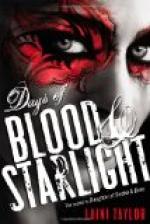CHAPTER XVI.
Lady Halifax and her daughter had met Miss Bell several times at the Cardiffs’, in a casual way, before it occurred to either of them to take any sort of advantage of the acquaintance. The younger lady had a shivering and frightened delight in occasionally wading ankle-deep in unconventionality, but she had-lively recollections, in connection with the Cardiffs, of having been very nearly taken off her feet. They had since decided that it was more discreet to ignore Janet’s enthusiasms, which were sometimes quite impossible in their verdict, and always improbable. The literary ladies and gentlemen whom the ghost of the departed Sir William brought more or less unwillingly to Lady Halifax’s drawing-rooms were all of unexceptionable cachet; the Halifaxes were constantly seeing paragraphs about them in the “Literary Gossip” department of the Athenian, mentioning their state of health, their retirement from scientific appointments, or the fact that their most recent work of fiction had reached its fourth edition. Lady Halifax always read the Athenian, even the publishers’ announcements; she liked to keep “in touch,” she said, with the literary activities of the day, and it gave her a special gratification to notice the prosperity of her writing friends indicated in tall figures. Miss Halifax read it too, but she liked the “Art Notes” best; it was a matter of complaint with her that the house was not more open to artists—new, original artists like John Kendal. In answer to this Lady Halifax had a habit of stating that she did not see what more they could possibly want than the president of the Royal Academy and the one or two others that came already. As for John Kendal, he was certainly new and original, but he was respectable notwithstanding; they could be certain that he was not putting his originality on—with a hearth-brush, for the sake of advertisement. Lady Halifax was not so sure of Elfrida’s originality, of which she had been given a glimpse or two at first, and which the girl’s intimacy with the Cardiffs would have presupposed in any case. But presently, and somewhat to Lady Halifax’s perplexity, Miss Bell’s originality disappeared. It seemed to melt into the azure of perfect good-breeding, flecked by little clouds of gay sayings and politenesses,




